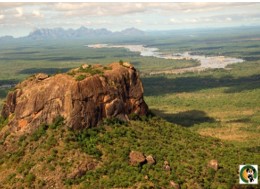Speeches Shim
OVERVIEW
Covering 42,300 km2, the Niassa National Reserve (NNR) in northern Mozambique is larger than Switzerland and is home to the country’s greatest concentrations of wildlife, including 70% of Mozambique’s elephants and a third of the lion population. The NNR is also home to 40,000 people, who depend critically on the Reserve’s fish, water, timber, soil, meat, and tourism revenue for their livelihoods. Yet despite the Reserve’s size and importance, the area is still little known internationally, and conservation is under significant threat from poaching, commercial logging, unmanaged use of natural resources, and relatively weak management capacity. A dramatic increase in elephant poaching in recent years highlights the fragile security situation in the NRR and the urgent need to protect the development potential and national heritage of Mozambique.
PROGRAM DESCRIPTION
The Alliance for Ecosystem Conservation Systems, Markets, and Tourism Global Development Alliance (ECOSMART) is a public-private sector partnership working to improve protected area management in the NNR by developing a 10-year General Management Plan that aligns NNR planning at the provincial and district levels, strengthens law enforcement, and implements an ecological monitoring system. ECOSMART is also working to increase the social and economic well-being of the NNR’s resident communities via revenues generated from the sustainable use of NNR’s natural resources. At the national level, the project supports Mozambique’s National Administration for Conservation Areas’ (ANAC) capacity for national law enforcement structures, supports specific activities that strengthen elephant and rhino conservation, and promotes research and lessons learned with the wider conservation community in Mozambique to strengthen the national level conservation area system.
KEY IMPACTS
In 2016, ECOSMART collared 20 elephants to track herd populations. Elephant collaring is an effective tool for managing Intensive Protection Zones and improves the Reserve’s ability to protect threatened species. Within the first 3 months of 2017, over 8,000 kilometers of the reserve was patrolled by air, providing critical data on human utilization of land, distribution of wildlife, and risks to the landscape. On the ground, the Reserve’s community team responded to 172 calls related to human-wildlife conflict between January and March 2017, and fences have been installed in strategic areas to protect villages’ crops. During the same period, ECOSMART also held 16 meetings with local communities to continue to build constituencies for conservation and equitable benefit sharing.


Comment
Make a general inquiry or suggest an improvement.